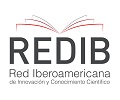The pH of guinea pig (Cavia porcellus) meat from the welfare-deficient slaughtering in the Peruvian central Andes
DOI:
https://doi.org/10.14409/favecv.v16i2.6818Keywords:
pH, guinea pig, slaughterhouseAbstract
In Andean region of Peru is common to slaughter Guinea pig without lairage and stunning. The aim of this study was to evaluate the pH of meat of Guinea pig (Cavia porcellus) from the unsuitable welfare practices during slaughtering in the Peruvian central Andes. The pH of 60 guinea pig carcasses were analyzed at 0, 1, 6, 12 and 24 hours after the end of the slaughter process. The pH was 6.79 ± 0.3, 6.74 ± 0.34, 6.59 ± 0.28, 6.45 ± 0.35 and 5.96 ± 0.11 for 0, 1, 6, 12 y 24 h post slaughtering. The equation that graphs pH evolution was Y=6.7765-0.0231X-0.0005X2 (R2=0.996).
Downloads
Published
How to Cite
Issue
Section
License
FAVE Sección Ciencias Veterinarias ratifies the open access model, in which contents (in full) are available free to anyone in the internet. The costs of production and publication are not transfered to the authors. This policy intends to break social and economical barriers that generate inequities in the access to information, and for the publication of research results.
All articles can be accessed at http://bibliotecavirtual.unl.edu.ar/publicaciones/index.php/FAVEveterinaria/issue/current/, under license Creative CommonsAtribución-NoComercial-Compartir Igual 4.0 Internacional.










